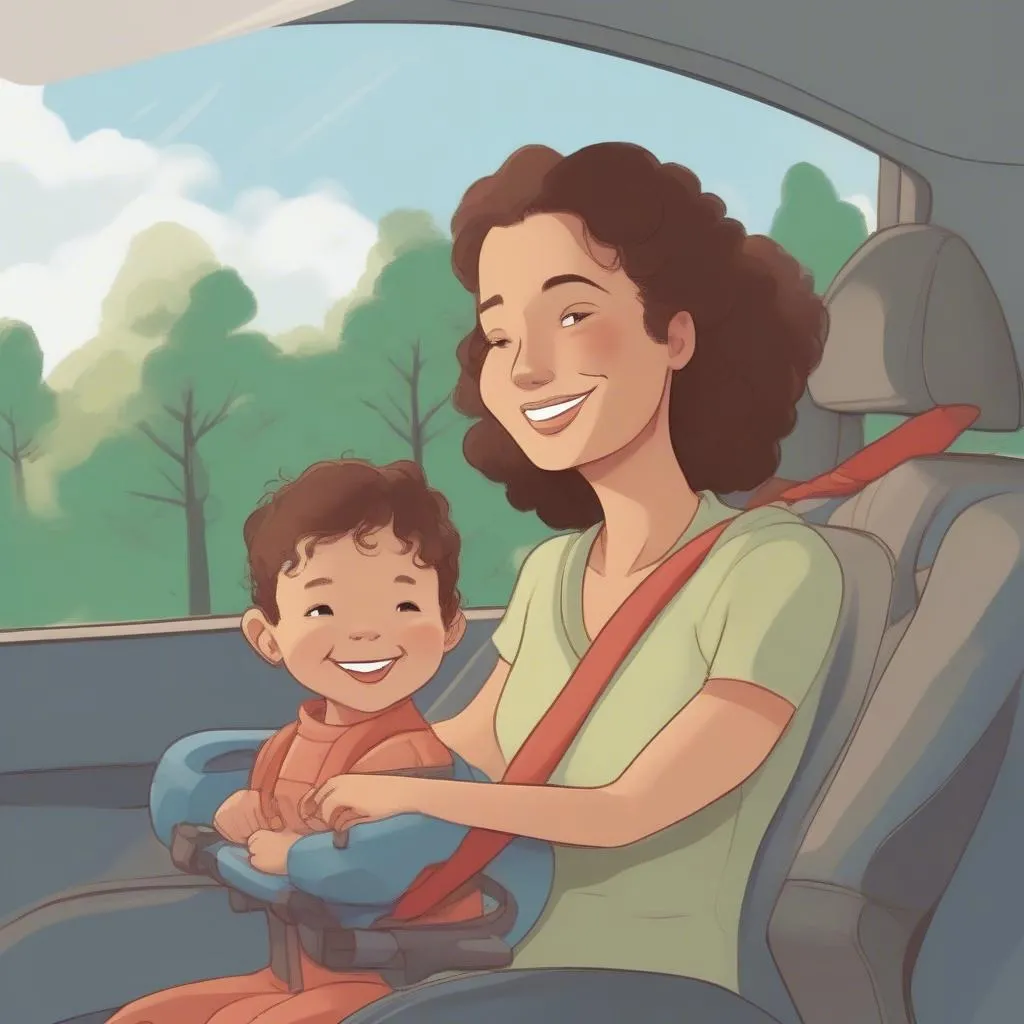Do you remember the day you brought your little one home from the hospital? It’s a day filled with joy, excitement, and… a whole lot of questions about car seats! As your child grows, so do their needs, and eventually, you’ll transition from a rear-facing infant car seat to a forward-facing booster seat. One of the biggest questions parents have is: How do I transition from a harness to a booster seat?
Understanding the Transition from Harness to Booster Seat
Let’s dive into the why and how of this transition. It’s not just about comfort or personal preference; it’s about safety.
Importance of a Harness:
- Protection: A harness provides a secure fit for your child, ensuring they’re properly restrained in case of an accident.
- Growth: Many harnesses adjust to fit a child’s growing body, providing optimal protection at each stage.
When is it Time to Transition?
- Height and Weight Requirements: Booster seats are designed for children who have outgrown their harness but are not yet tall enough for a regular seatbelt. Refer to your car seat manufacturer’s instructions for specific height and weight requirements.
- Safety: A harness becomes less effective once a child reaches a certain height and weight. They can be prone to slipping out, reducing the protection in an accident.
Why Booster Seats?
- Proper Seatbelt Fit: A booster seat elevates the child so the seatbelt fits properly across their chest and hips.
- Protection: The seatbelt acts as a harness, providing much-needed protection in a crash.
The Transition: Harness to Booster Seat
Step-by-Step Guide:
- Check the Instructions: Every car seat has specific instructions. Refer to them carefully before making the transition.
- Check Height and Weight Requirements: Ensure your child meets the minimum height and weight requirements for a booster seat.
- Choosing the Right Booster Seat: There are different types of booster seats. Choose one that fits your child’s size and is compatible with your car.
- Practice: Once the booster seat is installed, practice buckling and unbuckling your child to ensure they understand the process.
Common Questions about Harness to Booster Seat Transition
Q: How Do I Know When My Child is Ready for a Booster Seat?
- A: Check the manufacturer’s guidelines for your specific car seat. Generally, you can transition when your child is tall and heavy enough to safely use a regular seatbelt.
- Example: The Graco Nautilus 3-in-1 Car Seat, a popular choice for many parents, offers a harness that can fit children up to 65 pounds. If your child weighs more than that, you will need to move them to a booster seat.
Q: How Long Does My Child Need to Use a Booster Seat?
- A: Most children need to stay in a booster seat until they reach a height of 4’9″ (57 inches) or until they are around 8-12 years old.
- Example: According to the National Highway Traffic Safety Administration (NHTSA), the average child reaches 4’9″ around 8-12 years old. However, every child grows at different rates, so it’s important to refer to your local state laws and your child’s individual needs.
Q: What if My Child Is Uncomfortable in a Booster Seat?
- A: Be patient and encourage them to give it a try. It may take some time for them to get used to it.
- Tip: Let them choose a booster seat that they like. Many come in fun colors and designs to make it more appealing.
Q: Is There a “Right” Time to Transition to a Booster Seat?
- A: There’s no one-size-fits-all answer. It depends on your child’s size, weight, and development, as well as your car’s seatbelt configuration. Always follow the manufacturer’s guidelines for your specific car seat and the recommendations of your pediatrician.
Important Considerations:
- Car Compatibility: Ensure your car is compatible with a booster seat.
- Seatbelt Safety: Ensure the seatbelt fits properly across your child’s chest and hips.
- Proper Installation: Read the instructions carefully and install the booster seat correctly.
Additional Resources:
- For more information on car seat safety, visit the National Highway Traffic Safety Administration (NHTSA) website: https://www.nhtsa.gov/
- Learn about New York’s specific car seat laws: https://techcarusa.com/new-york-car-seat-laws/
- Discover car seat regulations for travel in Virginia: https://techcarusa.com/car-seat-regulations-va/
 Mom and Child in Car with Booster Seat
Mom and Child in Car with Booster Seat
Conclusion:
The transition from a harness to a booster seat is an important milestone in your child’s car safety journey. By following the guidelines and taking the time to practice, you can ensure your child is safely secured in a booster seat, ready for the next adventure.
Remember, every child is different. If you have any questions or concerns, please consult your pediatrician or a certified car seat technician.
Need assistance with car diagnostics? Our team of expert automotive technicians is available 24/7. Contact us via Whatsapp at +84767531508 for immediate support.